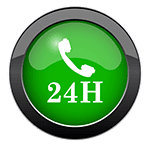
Healing Your Body After Having a Baby
There is a growing awareness in the U.S. for childbearing women to seek help in adjusting to their post-baby body. This is not to be confused with the celebrity magazine headlines of �How I Got My Body Back.� The goal is not to return to the same jeans you wore before or to fad diet and slim down to your former self.
Women who bear children can feel the history in their bodies. A cataclysmic journey has taken place: conceiving, carrying, and delivering a human into the world. It is a beautiful experience to be revered and should not leave the woman with any upset about the glory of what she has been able to do. Yet the entire year of making this happen � the three trimesters plus the so-called �fourth trimester� of infancy � does affect the body, sometimes in a way that bewilders or hinders us.
“This is not to be confused with the celebrity magazine headlines of ‘How I Got My Body Back.’ The goal is not to return to the same jeans you wore before or to fad diet and slim down to your former self.” ��Laura Lash
Perhaps because of the nationwide growing practices of yoga and mindfulness, or because Western medicine is opening up to the mind-body connection and the influences of Eastern medicine, we now have women asking for more support in the physical recovery of their bodies after childbearing, not seeking to return to the body they had, but to learn how to improve functionality of their body as it is now. In this article we will hear from a physical therapist, a yoga/Pilates instructor and a bodyworker to learn about common issues and how they can be addressed.
Issues
Nature allows for a graceful advance throughout pregnancy. Week to week with the growth of the baby, a woman�s body has the opportunity to adjust to carrying increased weight. We make modifications in how we sit, carry things, even in the way we get in and out of the car. Sleeping positions are limited and rest can be fitful. After nine-plus months of this accommodation there is the birthing event. The experience varies from person to person but as one of my yoga teachers � cracking a joke about the �will-this-ever-end� mentality � said: �All the babies come out!� And the babies do come out, all with their own unique birth stories. Regardless of the way in which a baby is birthed, it is a huge undertaking for the female body. The mother will then begin to heal herself, at the same time providing nourishment to her newborn, by breast or bottle. The first three months of a child�s life are a precious time for the mother�s mind, body, and emotions. And it can be a challenge to see clearly what the mother�s needs are when the newborn needs constant care. Admittedly, some women require medical attention in their postpartum recovery. More commonly, women are simply trying to get by in the sleepless, incubated state that is new motherhood.
Sheri Baemmert, E-RYT 200, RYT 500, RCYT, RPYT, teacher of Pilates, yoga and Thai yoga bodywork, elaborates on her experience with childbirth: �After I became pregnant with my son, I started to really understand what women experience.� As the teacher in class, Sheri�s demonstrations became different.
�Our bodies are amazing, and after my first home birth I realized preparing for birth is like training for the most intense workout you will ever have. � ��Sheri Baemmert, E-RYT 200, RYT 500, RCYT, RPYT, teacher of Pilates, yoga and Thai yoga bodywork
“As I got bigger and bigger and had to push myself off the floor instead of just hopping up, I understood what books can’t teach … After having a second child, I realized things don�t bounce back the same why they can after the first child. Again, knowledge can come from books, but wisdom comes from experience.�
There are common issues that arise for the postpartum mother. And as previously mentioned, there is a heightened awareness now that women are allowed, even encouraged, to seek help in improving the function of their core/abdominal muscles, pelvic floor (the muscular base of the abdomen supporting the bladder, intestines, and uterus) or any other body area that has been affected, and is perhaps dysfunctioning, after the pregnancy and birth experience.
Stephanie Powell, P.T., a physical therapist with Mayo Clinic Health System, has been working with women on these issues for 11 years, nine of them as a specialist working with the pelvic floor: �I just always encourage women to let their providers know any concerns they have postpartum, even if symptoms �are not a big deal.� Most common postpartum conditions include urinary incontinence (leaking urine), prolapse (when some internal structures such as the rectum, uterus, or bladder can sit lower in the pelvic floor), and reports of back pain (can be low back, mid back, neck, or all three).�
Approaches
At Prajna, a studio in Eau Claire, Sheri offers cues from her yoga and Pilates background to assist women in strengthening their pelvic floors and finding deep core strength. This work is done on Pilates-specific equipment and on a yoga mat with props. She attracts a wide range of clientele: �Basically anyone ready to commit to rebalancing their body. This includes finding subtle strength. We need to be both strong and flexible. We need to be balanced. We need to undo the consequences of our work style, lifestyle, play style. I offer my clients a full body, breath, mind approach to well-being. Some clients spend the first hour learning how to breath again. Others spend time �finding their true deep core.� � Sheri is incredibly understanding about the needs of new moms and is delighted when moms bring their babies along for sessions. She makes sessions physically and logistically accommodating so mothers feels it�s possible to repeatedly attend.
Christopher Hayden, LABT, CAR, a licensed bodyworker, will offer Visceral Manipulation (VM) and other modalities at Tuning Tree, a collective of therapists offering services in a new location on South Barstow Street, beginning in May. In his training with VM, he is �learning how to apply gentle hands-on techniques to the internal organs. This is aimed at improving their function, but can also help your body move and feel better.� In addition to postpartum work, VM can aid in digestive health, relaxation, and better movement throughout the body. �I�m excited to bring this work to clients to not only improve functioning, but also embodied self-awareness that really makes a long-term difference,� Christopher says. �I�m pairing up with Sandra Helpsmeet at the Yoga Center of Eau Claire to incorporate yoga techniques and visualizations with hands-on techniques in workshops and individual sessions.�
If you are most comfortable in a clinic setting, physical therapy may help you understand the shifts you�ve experienced and how to work with your postpartum body.
Timing
While caring for an infant, it can be hard to get a true sense of what your needs are. There is very little alone time to contemplate and focus on yourself, compounded by having very little time to take action on what your needs may be. It often gets to a point of fatigue or breakdown before women can recognize that something needs to change for them. By highlighting what is available to women, we can encourage them to seek help earlier on in the first few months of motherhood so they feel supported and can soldier on.
�Early intervention is key for treatment success, so letting women know that we are here and can help them is vital.� ��Stephanie Powell, P.T., a physical therapist with Mayo Clinic Health System
That said, treatment is possible at any time. Taking into consideration which approach to care may be best for you, you can work on rehabilitation of the body months or years after childbearing.
Stephanie elaborates on the commitment needed: �Timeline can be variable, dependent on severity of symptoms as well as other medical factors. While all therapists have their own approach, generally starting with once-weekly visits to establish tolerance to treatment, changes in symptoms, and assisting with challenges that may affect success. In terms of treating incontinence, we may see patients every two to three weeks to give them time to work on a home program.�
As wonderful as it is to seek and receive professional help, what simple things can you do to make things easier on yourself? Stephanie has more great suggestions: �Can you keep a few pillows near the area you normally feed baby, to keep your arms propped and avoid hunching the upper back? Are you keeping up with your water intake, and taking bathroom breaks regularly to try avoiding urinary tract infections or constipation? It is easy to forget the little things in the postpartum phase.�
















